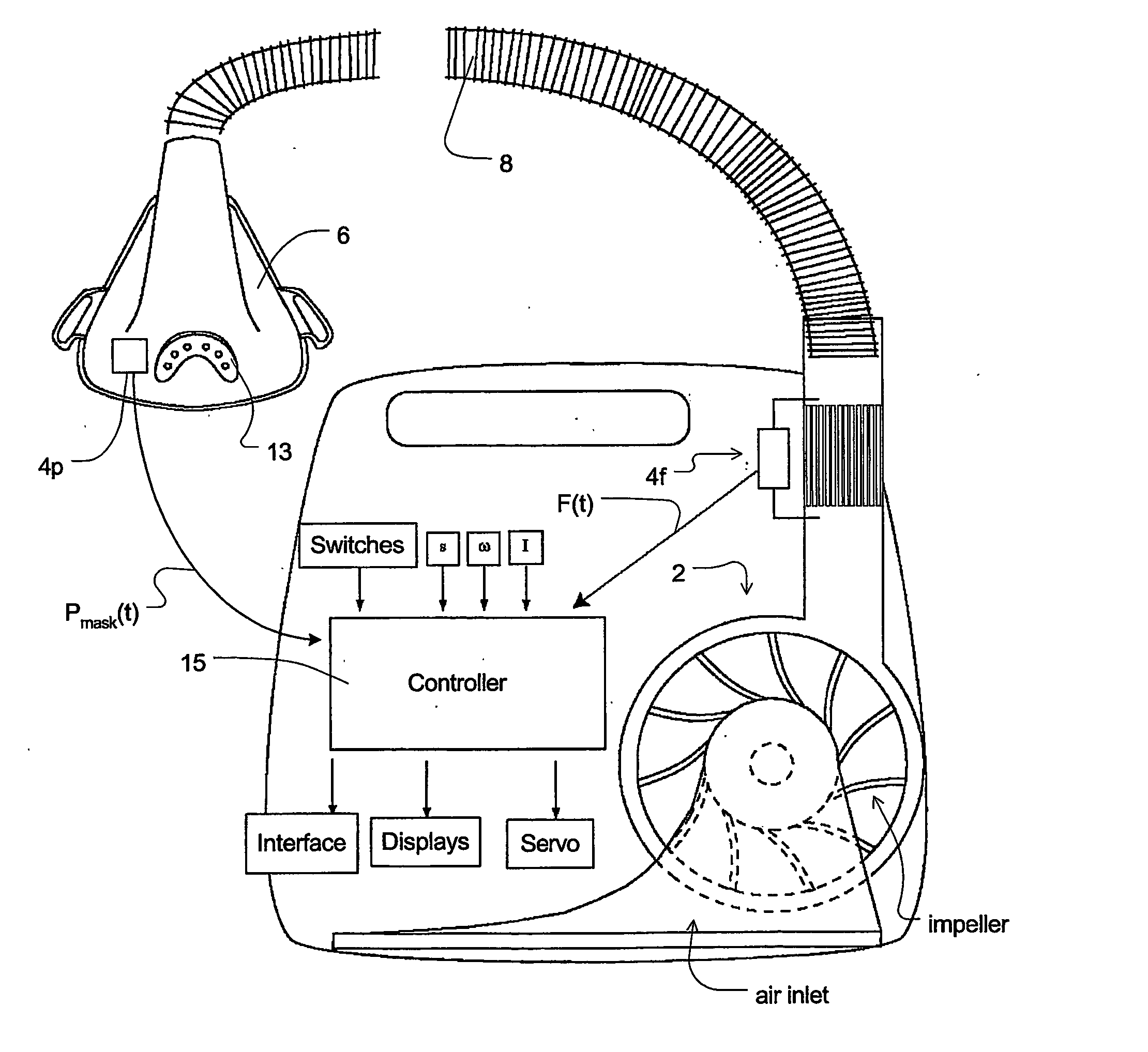Mechanical ventilation in the presence of sleep disordered breathing
- Summary
- Abstract
- Description
- Claims
- Application Information
AI Technical Summary
Benefits of technology
Problems solved by technology
Method used
Image
Examples
first embodiment
5.5.1 Automatic IPAP
[0051] In accordance with a first embodiment of the invention, a device is adapted to provide a generally square waveform having settings for IPAP and EPAP in a manner similar to ResMed's VPAP III device. The device has a clinician-settable pressure setting for the difference between IPAP and EPAP, ΔP (sometimes called Swing). The device monitors patient flow and determines a treatment pressure using the same algorithm as ResMed's AUTOSET SPIRIT device. See U.S. Pat. No. 5,704,345. Upon detection of the beginning of inspiration, as described above, the device provides a supply of air at the treatment pressure (IPAP=treatment pressure) and maintains that pressure throughout the inspiratory portion of the patients breathing cycle. Upon detection of the beginning of exhalation, the device decreases the supplied pressure to the treatment pressure less ΔP.
In this way the advantages of the automatically adjusting CPAP algorithm are brought to a bi-level CPAP device....
second embodiment
the invention is similar to the first embodiment, except that the End Expiratory Pressure (EEP) or the EPAP pressure is automatically adjusted, and the IPAP is a fixed delta pressure above the EPAP.
5.5.3 Third Embodiment: Automatic Mean Pressure
third embodiment
the invention is similar to the first embodiment, except that the mean or median pressures are automatically adjusted, and there is a fixed delta pressure between IPAP and EPAP.
PUM
 Login to View More
Login to View More Abstract
Description
Claims
Application Information
 Login to View More
Login to View More - R&D
- Intellectual Property
- Life Sciences
- Materials
- Tech Scout
- Unparalleled Data Quality
- Higher Quality Content
- 60% Fewer Hallucinations
Browse by: Latest US Patents, China's latest patents, Technical Efficacy Thesaurus, Application Domain, Technology Topic, Popular Technical Reports.
© 2025 PatSnap. All rights reserved.Legal|Privacy policy|Modern Slavery Act Transparency Statement|Sitemap|About US| Contact US: help@patsnap.com



